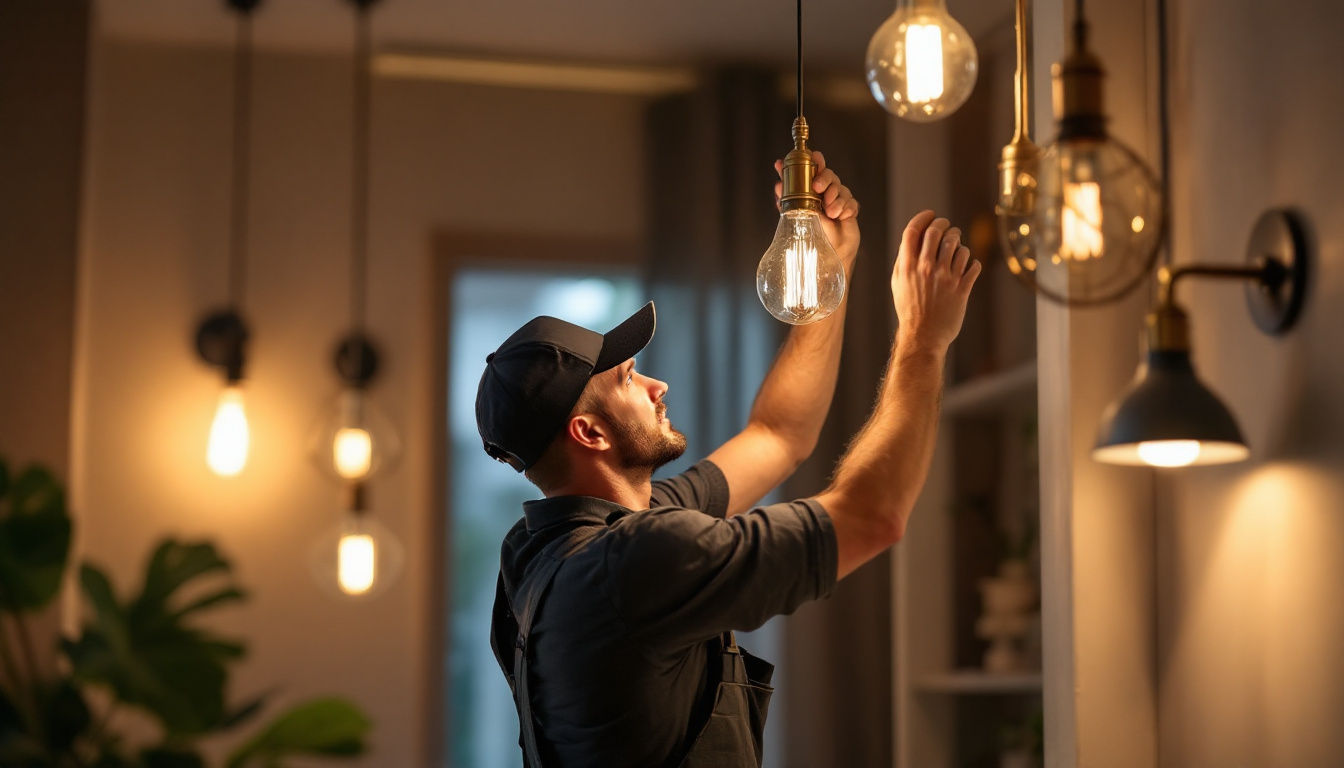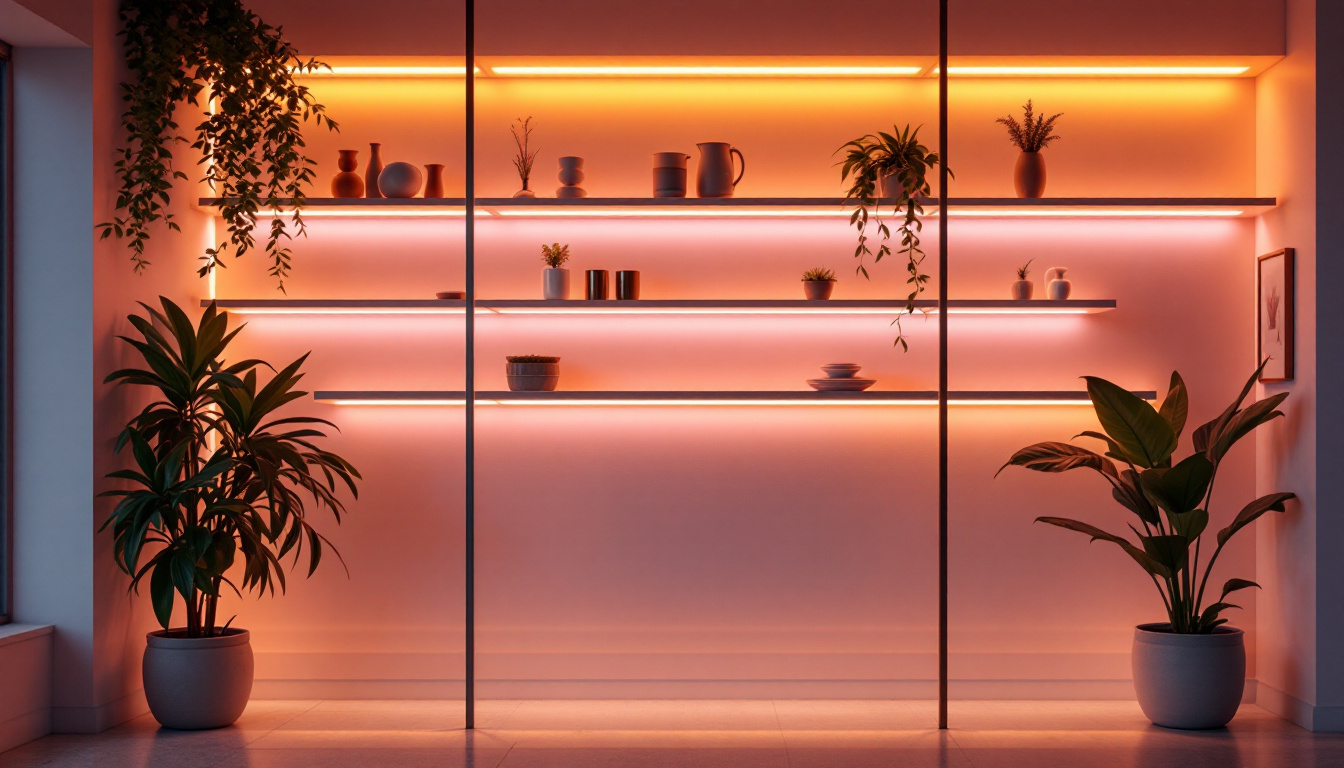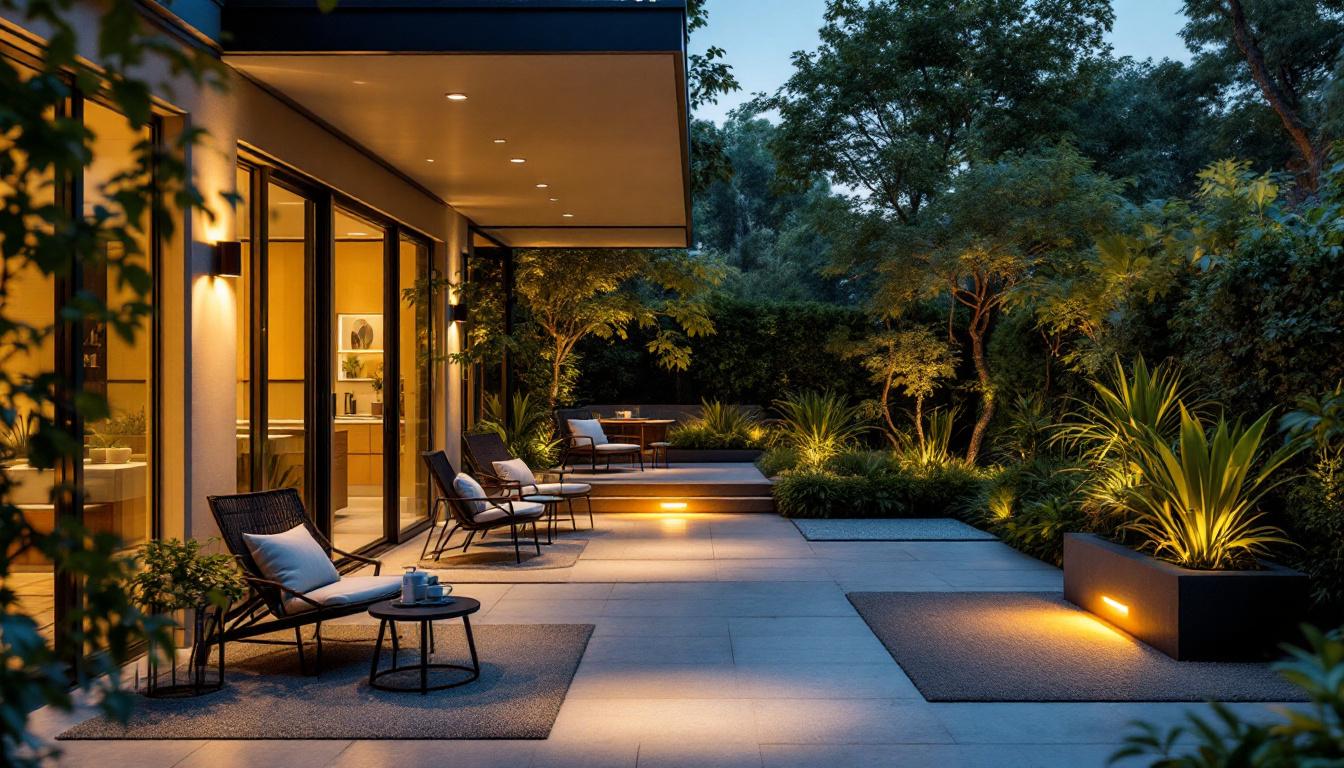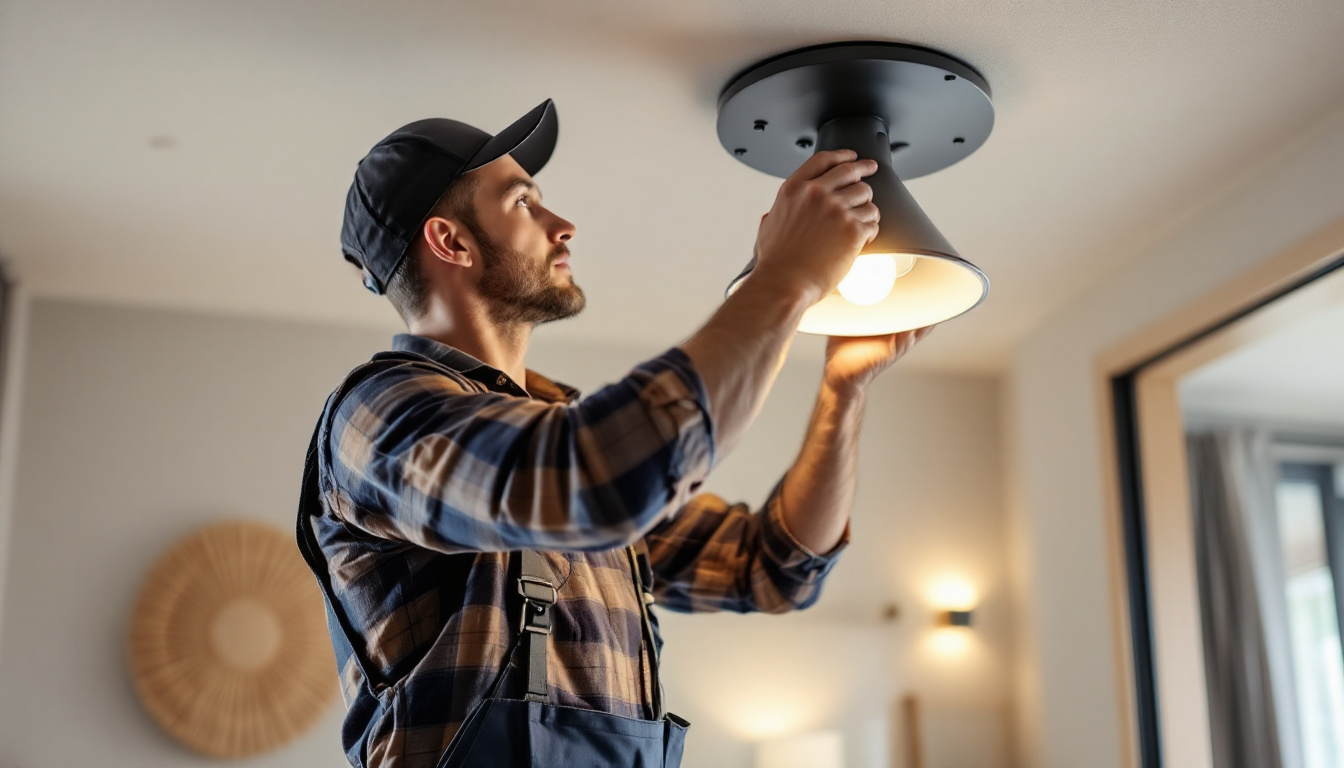
In the realm of home design, lighting plays a pivotal role in shaping the ambiance and functionality of a space. For lighting contractors, understanding the nuances of house lighting is essential not only for ensuring client satisfaction but also for enhancing the overall aesthetic appeal of the homes they work on. This guide delves into the various aspects of house lighting, providing insights and best practices that contractors can leverage to elevate their projects.
Before diving into the specifics, it’s crucial for lighting contractors to grasp the fundamental concepts of house lighting. This includes understanding the different types of lighting, their applications, and how they can be effectively combined to create a harmonious environment.
House lighting can generally be categorized into three main types: ambient, task, and accent lighting. Ambient lighting provides overall illumination, ensuring that spaces are adequately lit for everyday activities. Task lighting, on the other hand, focuses on specific areas where activities such as reading or cooking take place. Finally, accent lighting is used to highlight particular features or objects within a room, such as artwork or architectural details.
Each type of lighting serves a distinct purpose and can be used in various combinations to achieve the desired effect. Understanding these differences allows contractors to tailor their lighting solutions to meet the specific needs of their clients.
Another critical aspect of house lighting is color temperature, which is measured in Kelvin (K). The color temperature of a light source can significantly influence the mood of a space. For instance, warmer tones (around 2700K-3000K) create a cozy and inviting atmosphere, making them ideal for living rooms and bedrooms. Conversely, cooler tones (above 4000K) are often preferred in workspaces, as they promote alertness and concentration.
Contractors should consider the intended use of each room when selecting light fixtures, as the right color temperature can enhance the functionality and comfort of the space.
A well-thought-out lighting plan is essential for any successful lighting project. This plan should encompass the layout, fixture selection, and control systems, ensuring that the lighting not only meets aesthetic goals but also functional requirements.
When designing a lighting layout, contractors should start by assessing the room’s architecture and the activities that will take place within it. This involves identifying focal points, such as artwork, furniture arrangements, and architectural features, which can be enhanced through strategic lighting placement.
Additionally, it’s important to consider the natural light sources in the space. Areas that receive ample daylight may require less artificial lighting during the day, while darker spaces may need more robust solutions. Balancing natural and artificial light is key to achieving a well-lit environment.
The selection of light fixtures is a critical component of the lighting design process. Contractors should consider various factors, including style, functionality, and energy efficiency. For instance, recessed lighting can provide a sleek and modern look, while pendant lights can serve as statement pieces in dining areas or kitchens.
Moreover, energy-efficient options, such as LED fixtures, not only reduce electricity costs but also have a longer lifespan, making them a practical choice for homeowners. Contractors should stay informed about the latest advancements in lighting technology to provide clients with the best options available.
Incorporating control systems into the lighting design can greatly enhance the user experience. smart lighting solutions allow homeowners to adjust brightness levels, color temperatures, and even create lighting schedules through mobile apps or voice commands. This level of customization can significantly improve the functionality of a space.
Contractors should educate clients on the benefits of smart lighting and help them choose systems that align with their lifestyle and preferences. Proper installation and programming of these systems are crucial for ensuring optimal performance.
The choice of fixtures can dramatically influence both the aesthetic and functional aspects of a lighting design. Lighting contractors must navigate various styles, sizes, and technologies to find the perfect fit for each project.
When selecting fixtures, it’s important to consider the overall style of the home. Modern homes may benefit from sleek, minimalist fixtures, while traditional homes may call for more ornate designs. Additionally, transitional styles that blend elements from both modern and traditional aesthetics are increasingly popular.
Contractors should also take into account the preferences of the homeowner. Engaging clients in the selection process can lead to a more satisfying outcome, as they will feel a sense of ownership over the design choices made.
The size and scale of fixtures are equally important. A large chandelier may overwhelm a small dining room, while tiny pendant lights might get lost in a spacious kitchen. Contractors should measure the dimensions of the space and consider the height of ceilings to ensure that fixtures are proportionate and visually appealing.
In addition to size, the placement of fixtures should also be carefully planned. For example, pendant lights should hang at a height that allows for comfortable movement beneath them, while wall sconces should be positioned at eye level to provide effective illumination.
As energy efficiency becomes a priority for many homeowners, contractors should emphasize the importance of selecting sustainable lighting options. LED bulbs, for instance, consume significantly less energy than traditional incandescent bulbs and have a longer lifespan.
Additionally, fixtures that are designed for energy efficiency often come with features such as dimming capabilities and motion sensors, further enhancing their sustainability. By promoting these options, contractors can help clients reduce their energy consumption and lower their utility bills.
Once the design and fixture selection are complete, the next step is installation. Proper installation is crucial for ensuring that the lighting functions as intended and meets safety standards.
Safety should always be a top priority during installation. Contractors must adhere to local electrical codes and regulations, ensuring that all wiring and connections are secure. It’s also essential to use the appropriate tools and techniques to prevent accidents and ensure the longevity of the lighting system.
Additionally, contractors should educate clients about safety practices, such as avoiding overloading circuits and regularly checking for any signs of electrical issues.
After installation, it’s important to test the lighting system to ensure everything is functioning correctly. This includes checking for proper brightness levels, color temperatures, and the effectiveness of control systems. Contractors should encourage clients to provide feedback during this phase, as adjustments may be necessary to achieve the desired effect.
Fine-tuning the lighting can make a significant difference in the overall ambiance of a space. Contractors should be prepared to make recommendations based on the client’s feedback and preferences.
Once the project is complete, contractors should offer ongoing support to clients. This may include providing maintenance tips, troubleshooting assistance, and recommendations for future upgrades. Building a strong relationship with clients can lead to repeat business and referrals, which are invaluable in the lighting industry.
By being proactive and responsive, contractors can ensure that clients remain satisfied with their lighting systems long after the installation is complete.
The world of lighting is constantly evolving, with new trends emerging regularly. Staying informed about these trends can help contractors provide clients with modern and innovative solutions that enhance their homes.
Smart home technology continues to gain popularity, and lighting is no exception. Homeowners are increasingly seeking ways to integrate their lighting systems with other smart devices, such as thermostats and security systems. This allows for seamless control and automation, enhancing convenience and energy efficiency.
Contractors should familiarize themselves with the latest smart lighting products and systems, as well as the installation processes involved. This knowledge will enable them to offer comprehensive solutions that meet the demands of tech-savvy clients.
Layered lighting, which combines ambient, task, and accent lighting, is becoming a standard practice in modern homes. This approach allows for greater flexibility and control over the lighting environment, enabling homeowners to create different moods for various activities.
Contractors should emphasize the importance of layering light in their designs, ensuring that each space is equipped with a combination of lighting types that enhance both functionality and aesthetics.
There is a growing trend towards maximizing natural light in home design. Homeowners are increasingly looking for ways to bring the outdoors in, utilizing larger windows, skylights, and open floor plans. Lighting contractors can complement these design choices by selecting fixtures that enhance the natural light while providing adequate illumination during the evening hours.
By embracing this trend, contractors can create spaces that feel more open and inviting, ultimately improving the overall quality of life for homeowners.
House lighting is a multifaceted discipline that requires a thorough understanding of design principles, fixture selection, installation techniques, and emerging trends. For lighting contractors, mastering these elements is essential for delivering exceptional results that meet the needs and preferences of clients.
By focusing on the basics, creating thoughtful lighting plans, selecting the right fixtures, and ensuring proper installation, contractors can elevate their projects and enhance the living spaces they work on. Staying informed about the latest trends and technologies will further empower contractors to provide innovative solutions that resonate with modern homeowners.
Ultimately, successful house lighting is about more than just illumination; it’s about creating an environment that enhances the beauty and functionality of a home. By following this guide, lighting contractors can position themselves as trusted experts in the field, ready to tackle any lighting challenge that comes their way.
Ready to take your lighting projects to the next level? At LumenWholesale, we provide lighting contractors with the superior, spec-grade lighting products you need to create stunning, functional spaces. With our competitive wholesale pricing and commitment to quality, you can access an extensive selection of lighting solutions that meet the highest industry standards. Say goodbye to middleman markups and hello to hassle-free bulk buying with free shipping. Elevate your lighting designs today and give your clients the exceptional results they deserve. Discover the value and convenience of LumenWholesale by visiting our collection of premium lighting products at Wholesale Lighting at the Best Value.

Discover how tape lights LED can revolutionize your lighting installation projects with their versatility and efficiency.

Discover the benefits of wet rated recessed lighting and how it enhances energy efficiency in your home.

Explore the top challenges lighting contractors face with pot light designs, from installation intricacies to energy efficiency demands.

Discover the art of mastering scone lighting with expert tips and strategies tailored for lighting contractors.